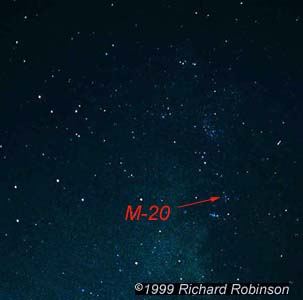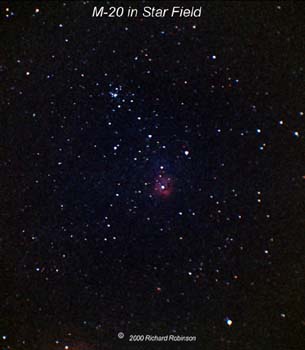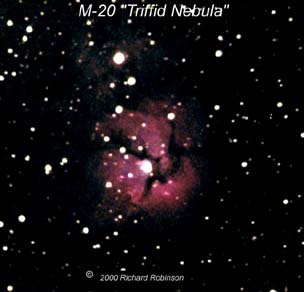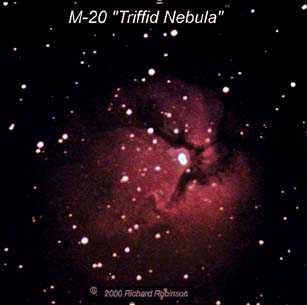|
|
|
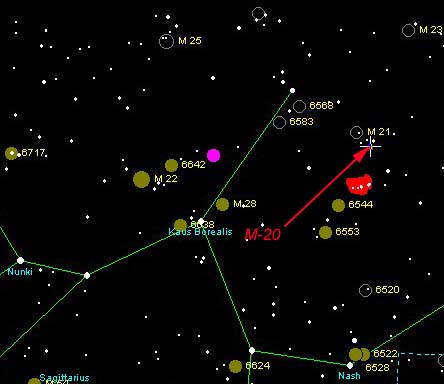 |
Size: 17 x 12 arcmin Magnitude: RA: 18h 02m 25s Dec: -22 d 59m 0s |
| M-20 is just slightly above M-8. The stars around M-20 are easy objects for amateur scopes and the nebula begins to appear even with short CCD exposures. However, since M-20 is far south, the further north you live, the more difficult it will be to observe it. Binoculars will show a fuzzy patch of light, similar to the image below taken with the Nikon Camera. | |
